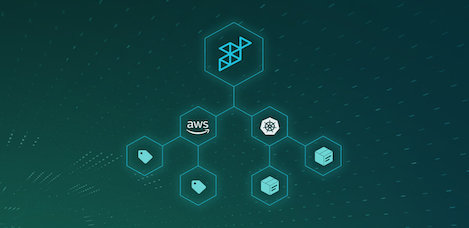Kubernetes cost management is a rising challenge for most DevOps teams, and managing your costs and budgets requires constant oversight. In the first of this two-part blog series, we explored areas that affect the cost of running Kubernetes in the cloud. Now, let’s explore strategies for managing those costs.
Budget Awareness Strategies
As we noted in the previous blog, using one big Kubernetes cluster is not ideal for tracking utilization and attributing costs to the right teams if you don’t have the right tools in place to manage that tracking for you. Using more, and thus smaller, clusters (per-team or per-app) to give better traceability is an option, but this can be less cost-efficient than fewer, larger clusters with shared resources. Namespaces are an alternative to multiple clusters that can be leveraged to share a cluster among multiple applications or teams and provide more visibility into the resources each team uses.
Whether using namespaces or multiple clusters, resource quotas can also be deployed to enforce cluster resource limits on applications or teams. When the team needs additional resources, they can ask for them to be allocated, but overall this strives to encourage cost responsibility among the teams. Natively within Kubernetes, you can set quotas for API objects such as:
-
Configmaps
-
Persistent volume claims
-
Pods
-
Replication controllers
-
Services
-
Load balancers
-
Node ports
-
Secrets
The challenge with these strategies is that they require manual intervention and oversight in order to keep up with the constant changes in business needs. KPI reporting helps identify and allocate costs, but without ongoing cost monitoring, KPI metrics alone can’t catch cost anomalies as they occur. In order to truly achieve visibility and transparency, you need a dedicated cost management solution.
Automating Kubernetes Cost Management with Yotascale
The first critical step to gaining visibility and control of your Kubernetes spend is understanding the cluster configuration and allocating costs in a way that fits the needs of your organization. Every instance running in the cluster needs to be labeled so that it can be grouped for cost reporting. With Yotascale, we have the ability to allocate Kubernetes costs by:
-
Namespace
-
Pod
-
Deployment
-
Label
This gives your organization the granularity it needs to have accurate and complete visibility of cluster usage and costs across teams and applications. You can also track the cost and usage of non-Kubernetes compute usage for consolidated cost allocation and utilization visibility across your business.
Once you have your instances tagged and cost properly attributed, you can fully understand what the utilization of those resources is and take action to optimize for both utilization and cost reduction. DevOps teams tend to over-provision their instances “just in case” at the start of a cluster, but once the cluster has been running for a while, Yotascale can easily detect instances that are consistently underutilized, and provide recommendations to optimize usage.
Most importantly, once you understand your ongoing costs and utilization, automated anomaly detection can spot usage and cost spikes that are outside the norm and alert the affected teams. This can save you hundreds or thousands of dollars by enabling your teams to identify and shut down rogue processes.
Kubernetes Cost Management as-a-Service
While hands-on, manual strategies exist for controlling your Kubernetes cloud costs, they are time-consuming, error-prone, and challenging to maintain. Deploying an automated cloud cost management solution solves those headaches so that you can focus on the development that fuels your business.
Yotascale provides clear visibility into Kubernetes resources, their costs, and the allocation of those costs by namespace, pod, deployment, and labels. We leverage AI and machine learning to monitor and detect cost and usage anomalies and provide immediate notification of the source of the anomaly.
Beyond Kubernetes, Yotascale is the only cloud cost management solution that provides a unified view of cloud costs for standard and containerized workloads according to how you run your business.
Wrapping Up
Cost management is often overlooked until the costs truly explode. However, even before reaching that point, more transparency and insights are helpful. Optimizing costs as they occur is still one of the easiest ways to save a lot of money in the long run.
The need and opportunities for cost optimization require dedicated tools with great visualizations and infrastructure understanding, such as Yotascale. To optimize your Kubernetes infrastructure budget, and save money that you can dedicate to other exciting development projects, learn more about Yotascale and experience a free trial. Start by requesting your Yotascale demo today.

